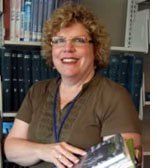|
In addition to teaching at his school, he has taught workshops with the Tharp Company, major universities in the United States and the American Dance Festival in Tokyo, Japan. He is recognized as a Fellow of the Los Angeles/Israel Center for Jewish Culture and Creativity.
Our interview was conducted on February 14.
What brought you to dance?
I was involved in theater productions at college and needed help moving on stage so I took dance classes and found dance spoke to me - felt more suited to me. But I maintain a love for the theater.
Why San Diego?
I grew up here, went off to college, lived in New York and Europe and after ten years touring, I moved back. I wasn’t necessarily looking to start a company. I had a wife and son and living in New York was getting difficult. We came back temporarily and it became permanent. I thought it was important for dance to decentralize from New York. It was 1984 but officially the company began in 1988, so we are at our twentieth anniversary season this year.
Where have you studied?
I was in Boulder, University of Colorado and SMU in Dallas, Texas, but it was really learn as you go - as soon as I was out of college I was with professional companies. The training was with the people with whom I was working - dancers and choreographers - but certainly when I got to New York there was a plethora of great teachers and I worked with some of them.
You mentioned to me you had taken ballet classes with David Howard (famous ballet teacher) - can you tell me about that?
I took a number of classes with him. More consistently I studied with Maggie Black and Larry Rhodes. She was sort of an eccentric character but a very popular teacher with all the top dancers from American Ballet Theatre, Joffrey, Twyla Tharp and Paul Taylor. It was a rich atmosphere. David Howard was a wonderful teacher but I leaned a bit more toward modern rather than strictly ballet.
Why do you think ballet classes are filled with modern dancers?
There’s been a blurring of the boundaries between modern and ballet and really good, innovative ballet choreographers are incorporating a lot of vocabulary that is way outside normal ballet vocabulary. And most of the modern dance choreographers have demanded a higher technical level of their dancers than in the past which has translated into needing a stronger ballet base.
What do you think the ballet lends to that strong base?
Strength, discipline, flexibility, things that aren’t always necessarily attached to modern dance.
Do you think it is difficult going back and forth between the techniques - ballet and modern?
It’s an individual thing. I see a lot of ballet dancers who really can’t do much outside of the style or vocabulary of ballet. It has to do with their training or their interest. And I see a lot of modern dancers who excel in one style and not others - they don’t have the range. It’s a real advantage to be a well rounded dancer because you rarely get to stay with one style.
Ballet is being enriched by modern dance choreographers…have you considered choreographing for ballet?
I would certainly consider it but I haven’t done it much. I’ve worked with a lot of ballet dancers. I have one now who is studying as an intern - it’s been interesting to observe her incorporate some of my ideas about movement and blend that with her very strong ballet technique.
If you look at a group of modern dancers could you pull out the ones who had started with ballet?
Yes - yes, you see a certain foundation - a certain structure.
And is that a structure you want?
It’s not always something I can work with because some are so strongly aligned with their ballet vocabulary that they can’t find other expressiveness. My style is quirky - it’s all fluid, rounded, curvy and it drives from the legs and not all dancers can accommodate that. It depends how open they are. Some dancers have no interest in changing what they are doing and some have a hunger to try other things and learn more and keep adding to what they can do.
Do you consider your view of modern dance as part of one of the “schools” such as Wigman, Graham, Dunham, Horton?
The whole notion of family tree in dance which used to be easy to identify is not so clear any more. I feel my movement is more related to José Limon, with a breathiness, a fluidity and a dramatic quality - the things I associate with his style - but I wouldn’t say I’m a descendant because my background is too eclectic - different styles of ballet - different styles of modern. The influences just grow as you go along.
Tell me about your company at this time.
I am working with seven dancers for the current project Stay the Hand. Immediately after I’ll be setting the Pearl Fishers for the opera and I’ll using these dancers plus several others. One of the things I’m interested in doing is recreating a corps of dancers that I can work with consistently. I have a couple of dancers I’ve worked with a long time, and I’m ready to recreate this corps - it’s the right time now that we are in our new home.
What would you like to see happen to your company in the future?
More performing, more touring, continue doing collaborative projects; television, media, work with opera or music organizations. I’ve done a lot of that in the past.
Do you do all of the choreography for your company?
Generally, I do. I’m doing this because I like to create work and I have a need to do that. I like seeing other people’s work, but generally I do the choreography.
Do you foresee importing choreography?
I’m open to that but no immediate plans. If we do expand our performance schedule, I’ll look at that possibility.
Do you encourage choreography in your dancers and students?
Yes, I try to be supportive and I have contributed work to their concerts. A number of the dancers have been choreographing - but it’s not part of my programming.
What plans do you have to increase your audience?
Now that we have established a school we want to have an outreach activity to grow our audience. One of the long term plans is to establish a home theater, we use to perform at the Old Globe, but the scheduling doesn’t work out. What we’d like is for the building at NTC right across from our studio to be our home theater.
Haven’t they completed constructing it?
They haven’t done anything to it. They just finished the feasibility study to convert it to a theater and the NTC Foundation Board has to decide how committed they are and raise the funds. It would be wonderful - a 500 seat theater. We could walk right across the parking lot to the theater.
We were one of the first to use the Garfield Theater (Lawrence Family Jewish Community Center) and we use the North Park Theater. I haven’t used the Salvation Army Theater. The Balboa stage may not be deep enough - I need to see if it workable for us.
Do you think you need a theater that is more intimate than something like the Civic Theater?
My work is a lot about character, dramatic quality, and you don’t want to be sitting far away. Facial expression, the energy between two dancers, tends to get lost in a big theater.
Does your school feed your company?
That’s part of the long term plan and it will take several years to grow.
As a choreographer what turns you on?
Wonderful responsive dancers, they are a great inspiration. They influence the work enormously; you see what’s possible through them. I would not create the same choreography on a different group of dancers - it’s an interactive process. Wonderful music definitely turns me on. Music excites me - the music often comes first.
I knew someone who choreographed first and then found music.
That’s not uncommon, I always found it strange. Pina Bausch is coming to do a presentation and she will often do that - choreograph and then look for music. It creates a situation in which the movement is not subordinate to the music. But it is such a collaborative thing between the dance and the music. Sometimes I feel it’s my bigger job to find the music and then the movement will fall into place.
Does being Jewish affect - enrich - or not - your work?
It does - it’s a theme I have explored many times over the years - there’s always that debate between Jewish art and art made by someone who is Jewish. I wouldn’t characterize most of my work as Jewish but I have worked with Sephardic music, Yiddish songs, a piece I called Blessings and Curses had a strong Jewish identity in the text, music and movement. It’s definitely added a whole range and element to my work. In Stay the Hand the Persian composer is Jewish, his music is based in traditional Persian music and the themes have to do with conflict and co-existence in the Middle East - aren’t directly Jewish in theme but how we all relate to what’s going on in the Middle East. And, the split off from the Jewish world and the Moslem world - Abraham, Isaac and Ishmael.
Where would you like to be in ten years artistically?
I would like to see myself moving into new territory - I’m not much into rehashing what I’ve done. I like to collaborate with other artists because that’s what brings me energy and growth. I’d love to be doing a combination of full evening work but also smaller more intimate work. I’d like to have a strong and well seasoned company of dancers - love to have a well established school that is training professionals as well as children and adults interested in dance.
Where would you like the company to be in ten years?
I want it to have grown and have people who inspire me; maybe ten dancers. Most modern dance work doesn’t require more - a good solid corps. I don’t want a pyramid structure - I am much more oriented toward having a group that is equally strong with equally strong identities rather than a few stars.
What is your criterion for choosing dancers?
I don’t have a set of criteria - but technique is important, willingness to try different things, a good personality is critical, sense of character - someone who can project on a stage. Partnering ability, interacting with other dancers is hugely important and, of course, musicality. Some dancers can hear music and others can’t.
Some breathe with the music.
Yes.
Do you see a trend in your work?
I tend to resist trends. I like going in different directions. I have a particular movement and dramatic style - but I resist repeating myself. I may go in a certain direction, but I don’t stay with it too long. The last couple of years I’ve tended to create larger scale collaborative work but I’m not doing that exclusively.
Was taking this new studio space a risk?
Sure! It’s absolutely a dream come true. I love the space, the interaction with others in the dance community. It’s a large calculated risk - but I have no question about it being the right decision.
Do you consider your work abstract or structurally based? - do you have a preference?
I do both - I’ve done a lot of story telling or character based work. But I have done a lot of work reactive to the music - I don’t consider it abstract. I think of it as more collaborative with the music. It has a thematic quality - something that has tension, conflict, resolution and co-existence - those are strong themes but I’m not telling a particular story.
Tell me about Stay the Hand.
It’s exciting to delve into another culture - Persian culture. I’m not trying to create something Persian but I’m learning a lot about that world.
You said “Persian” - is that different than Iranian?
Well, yes. The work reaches back into the ancient Persian culture with a contemporary sensibility at the same time. Some ancient concepts of dualism - finding compatible ways for opposites to co-exist versus more polarizing or conflicting - that’s the heart of the work. At times the work is integrated but there’s also a lot of tension - it’s looking at those two different ways opposites tend to look at each other.
Is there anything else you would like to say?
The music I’m working with is really rich - there are ten sections - and they all have a different feel and sound to them. I am using seven dancers, we are incorporating scenic elements and costumes will be integrated with the scenic elements.
I’m very enthusiastic about this work.
On May 22, 2007, my review of John Malashock’s work-in-progress Stay the Hand appeared in San Diego Jewish World. Celebrating the Malashock Dance Company’s twentieth anniversary season, this dance work will open at the Birch North Park Theatre beginning on April 4, through April 13.




THE JEWISH CITIZEN
Mafia 'wise guy' converts to Judaism
Unlocked: A Journey from Prison to Proust by Louis Ferrante; HarperCollins Publishers, 308 pages, $25.95.
By Donald H. Harrison
 SAN DIEGO—We’ve all heard about jailhouse conversions: when murderers suddenly find Jesus. But have you heard about the Italian Mafia armed robber and enforcer who converted to Judaism? In his memoir, Louis Ferrante tells of his metamorphosis from “wise guy” to a wise man, and from near illiteracy to being a bibliophile. SAN DIEGO—We’ve all heard about jailhouse conversions: when murderers suddenly find Jesus. But have you heard about the Italian Mafia armed robber and enforcer who converted to Judaism? In his memoir, Louis Ferrante tells of his metamorphosis from “wise guy” to a wise man, and from near illiteracy to being a bibliophile.
His story is engaging, funny, and fascinating in a Godfather sort-of-way. Readers can’t help but be amazed, and shocked, with the matter-of-factness with which people “whack” each other; with the elaborate code of respect that Mafia chieftains demand from their underlings, and with the complicated rules governing who does what in the underworld.
Ferrante’s life as a hood is the first part of the book; his life in federal and state prisons is the second part. Reading it, I found myself remembering the brilliant “red light bandit” Caryl Chessman, whose thoughtful books from death row fueled a movement in the 1950s in California against capital punishment. The difference was that Chessman was pleading for his life; Ferrante’s indictment of the penal system is from a man who already has served his time and therefore is not self-pleading.
The brutality of life in prison exceeds even that of the wise guys on the streets. Some prison guards or “hacks” become co-conspirators with the locked-up criminals; while others, perhaps to prove themselves, become sadistic torturers.
When you are in prison for a long stretch, Ferrante informs us, your mind can atrophy from lack of use. Recognizing that he was not growing as a person, Ferrante started on a program of self-improvement: reading. Curiously, one of the earliest books he read was Mein Kampf, no doubt placed in the prison library in response to the clout of the Aryan Brotherhood behind bars. Rather than identifying with Hitler and his racist theories, Ferrante increasingly identified with Hitler’s victims, the Jews, equating the thuggery with which prison guards treated inmates with the Nazis’ victimization of the Jews.
In his reading, he learned more and more about Jews and Judaism, eventually deciding to turn over a new leaf not only in his conduct but in his belief system. He started wearing a yarmulke in prison, even though to do so exposed him to some ridicule. But turning Jewish didn’t mean he was turning pacifist, and anyone who messed with Ferrante in prison was likely to learn why he was so feared as a Mafia enforcer. Eventually, he was more or less left alone.
When he asked the prison rabbi to put him on the Jewish inmate list, “he ignored me, thought I was a phony, maybe after some special treats for Jewish inmates,” Ferrante wrote. “Listen,” I said, “I’m not interested in your bagel and your rugelach on Saturdays. I’m lookin’ for conversation.” The rabbi acceded to his request, and after a while began looking for Ferrante when he didn’t show up for a meeting.
Ferrante’s wit comes through in the nicknames he gave other inmates. The “Pure-Blooded American” who always ranted about the “Jewish conspiracy” he nicknamed “Reichmarshall Hermann Boring”; a black reverend, constantly condemning the white man’s treatment of blacks, he named “Archbishop Desmond Cuckoo.”
Observed Ferrante: “In jail, most American Jews aren’t considered dangerous. The dozen or so I did time with were all there for nonviolent crime. I don’t think anybody ever checked into protective custody saying, 'I’m scared for my life, the Jews are after me.'”
When Ferrante was reassigned to the Adirondack prison, he came in chained to an inmate named Slim. Ferrante received money from relatives for commissary privileges; Slim had no one to look after him. “On our scheduled store day, I asked if he needed anything… ‘No,’ he said, ‘I’m good. I been goin’ wit’out my whole life. Thanks anyway.’ I bought Slim some necessities anyway, soap, shampoo, and some ten-cent soups, for nighttime hunger.”
Slim saw Ferrante praying in a tallis, and was surprised to learn he was a Jew. A member of the Aryan Brotherhood, Slim thought about what had happened, and later told Ferrante that he had written a letter to his brother, who also was a White Supremacist.
“’ I…tole him the only guy who ever helped me in my life is a Jew….’ He opened his shirt and showed me a swastika tattooed across his chest. ‘Some dude in my block’s getting’ ink on the visit. I’m coverin’ this up nex’ week.’ A ten-cent soup can change someone's opinion of an entire race; the power of a good deed.”


JEWISH BOOKS FOR YOUNGSTERS
Sarah laughs ... and Sammy enjoys Shavuot
By Sherry Berlin
 SAN DIEGO—Kar-Ben Publishing has announced its new picture books for the spring season. The featured book for the season, Sarah Laughs, is the second of its bible series for kids by Jacqueline Jules. Following up Abraham's Search for God, a story of Abraham as a young boy who develops his belief in one God, Sarah Laughs is an example of a contemporary midrash about the life of Sarah. This story focuses on Sarah, a beautiful young girl in the city of Ur, whose "laugh made the whole world clap hands with joy." She meets Abraham and marries him. When a voice tells Abraham that they should leave their home and move to a new place, Sarah follows him and they begin their lives anew in Canaan, teaching their children and other families "to worship one God, a God who demanded kindness and good deeds." SAN DIEGO—Kar-Ben Publishing has announced its new picture books for the spring season. The featured book for the season, Sarah Laughs, is the second of its bible series for kids by Jacqueline Jules. Following up Abraham's Search for God, a story of Abraham as a young boy who develops his belief in one God, Sarah Laughs is an example of a contemporary midrash about the life of Sarah. This story focuses on Sarah, a beautiful young girl in the city of Ur, whose "laugh made the whole world clap hands with joy." She meets Abraham and marries him. When a voice tells Abraham that they should leave their home and move to a new place, Sarah follows him and they begin their lives anew in Canaan, teaching their children and other families "to worship one God, a God who demanded kindness and good deeds."
Sarah proves to be a very supportive wife and a wonderful role model within the community, "The doors of Sarah's tent stood wide open, welcoming others to visit and share her food." However, Sarah no longer laughs as she is growing old and still childless. She suggests that Abraham take another wife who will bear him a child, so Abraham can be the father of a nation. This was not unusual as, "In those days, many men had more than one wife." In the end, three strangers come to the tent of Abraham and Sarah to tell them that they will have a child and finally Sarah's laugh reappears. Within the year, Sarah gives birth to a son who brings unbelievable joy to her life, "On the day Isaac was born, the sun smiled down on Sarah's beaming face. And the whole world clapped hands and laughed with her."
The kid-friendly text and beautiful illustrations help tell this story, which contains many life lessons, including that of welcoming the stranger and the importance of taking care of the needy. This midrash gives insight into the character of Sarah, the woman who bravely left her own world to go with her husband and take care of his people.
The new Reader's Theater play, Let My People Go! by Tilda Balsley will be a fun addition to Passover seders this year. This script, featuring Moses, Pharoah, the Egyptians, the chorus and a narrator to tie it all together, tells the story of the ten plagues. With the rhyming text and colorful cartoon-like illustrations, this book not only gives families or teachers a different way to teach this story, but parents and children alike will find themselves "acting up" when retelling the story of Passover.
The next in the Sammy Spider series by Sylvia Rouss, Sammy Spider's First Shavuot, will also be released this spring. The story begins with Sammy and his mother spider watching Mrs. Shapiro make blintzes for the Shavuot holiday, which, of course, makes Sammy want to make blintzes too. He sees Mr. Shapiro cutting berries for strawberry topping and learns that Shavuot celebrates the first fruits of the spring harvest season. When Josh, Mrs. Shapiro's son, walks in the kitchen with a Torah scroll, Sammy learns that Shavuot is also the time when God gave the Torah to Moses. The Torah, in its own way, is much like the harvest, in that it is a recipe for life given to the Jewish people. The book concludes with a recipe for blintzes.
The spring season of picture books from Kar-Ben Publishing has the authors Jacqueline Jules and Sylvia Rouss, award-winning authors of many books. Tilda Balsley, a former teacher and a first-time writer, hopes to write more books like “those I enjoyed sharing with my students.” Great endeavors by all!

SAN DIEGO JEWISH WORLD THE WEEK IN REVIEW
Carol Davis in San Diego: The Clean House plays to a pleased house
Peter Garas in Canberra, Australia: Double standard: journalists shed no tears for Ukrainians denied Russian heating oil
Yvonne Greenberg in San Diego: Lecturer says Sydney Taylor’s children’s books intrigue audiences of all ages
Donald H. Harrison in San Diego: The Zoo as textbook for religious studies
heila Orysiek in San Diego: Kaballah book helps open ears to the Voice
Marissa Palin in San Diego: Beth Israel event focuses on auto emissions
Gary Rotto in San Diego: Surrogates for Clinton and Obama debate for the affection of Ohio Jewish voters
Lynne Thrope in La Jolla, California: Whisknladle: restaurant gets it right
Shoshana Bryen in Washington DC: The Angelina Jolie report on Iraq progress
Peter Garas in Canberra, Australia: No protests over gas cutoff to Ukraine?
Sheila Orysiek in San Diego: Mitzvah equation: difficult equals better?
Ira Sharkansky in Jerusalem: Israel's response in Gaza: long in coming
Judy Lash Balint in Jerusalem: Filmmaker Laura Bialis describes "Only thirty-six hours in Sderot."
Shoshana Bryen in Washington, D.C.: Obama and McCain debate Al Qaeda
Carol Davis in San Diego: Tick, Tick...BOOM at Stone Soup in S.D.
Rabbi Baruch Lederman in San Diego: There is no tempest in this coffee pot
Rabbi Leonard Rosenthal in San Diego: Even Mishkan's building awaits Shabbat
Ira Sharkansky in Jerusalem: Kicking up a fuss over Jonathan's sexuality
Plus Letters to the editor
Link to previous editions
< BACK TO TOP
|

 —
—